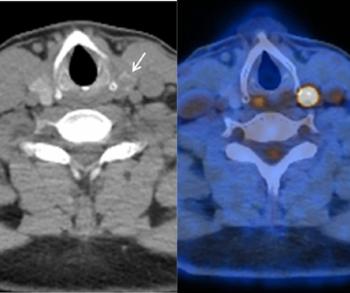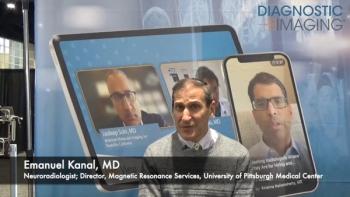
Innovations in MRI make 3D techniques more practical
Technological advances in MR imaging and expanded clinical applications have drawn radiologists' attention to 3D MRI volumetric techniques and are dazzling them with the possibilities.
Technological advances in MR imaging and expanded clinical applications have drawn radiologists' attention to 3D MRI volumetric techniques and are dazzling them with the possibilities.
Three-D, or volumetric, scanning has long been available for clinical MR imaging, with a range of tissue contrast limited to T1-weighted and fluid-attenuated T2-weighted techniques. T1-weighted 3D techniques have played an important role in imaging of the brain and dynamic fat-suppressed imaging of the breast and abdomen. Fluid-weighted techniques are used for MR cholangiography, myelography, and cisternography.
The narrow clinical applicability of these techniques and scan time concerns have prevented 3D from supplanting 2D imaging for most routine MR applications. But a broader range of available MR techniques coupled with advances in parallel imaging have made 3D techniques more attractive and practical.
Recently available MR pulse sequences, such as XETA (extended echo trains and ARC parallel imaging) and SPACE (sampling perfection with application-optimized contrasts using different flip-angle evolution), bring the full range of fast spin-echo contrast resolution, including proton density, T2, and fluid-attenuated inversion recovery (FLAIR), to 3D imaging.
New 3D T1 gradients recall T1-weighted techniques such as MEDAL (multi-echo with 2-point Dixon reconstruction for decomposition of aqua/lipid) and IDEAL (iterative decomposition of water and fat with echo asymmetry and least squares estimation) and produce volumes with echo times set for in- and out-of-phase imaging. They also produce images based solely on water or fat in a single breath-hold acquisition. The water-based images these techniques provide are extraordinarily resistant to fat-suppression failure.
Advances in parallel imaging that combine accelerations in image space (ASSET, SENSE) as well as k-space (GRAPPA), such as ARC (autocalibrating reconstruction for Cartesian imaging), can reduce scan time by as much as 90%.
Key benefits of 3D scanning include the ability to acquire thin slices without intervening gaps. Three-D data can be reformatted retrospectively to correct for suboptimal patient positioning during scanning. Since the entire volume of anatomy is encompassed, operator dependency issues should be diminished and repeat scanning avoided.
Thin slices are critical for sensitivity in some applications where lesions are small or subtle, such as the early detection of multiple sclerosis in the brain (Figure 1) and cartilage disease (Figure 2). High-resolution 3D imaging can lead to reduced overall study time by replacing additional acquisitions in orthogonal planes. For example, a single three-minute 3D acquisition of the brain or knee provides isotropic source data that can be used for creation of sagittal, coronal, axial, and oblique data sets.
As these techniques become more widely available, they will gain a more secure foothold in neurological, musculoskeletal, and body imaging and may revolutionize clinical MR scanning, much as volume imaging has revolutionized clinical CT.
Dr. Tanenbaum is section chief of CT, MRI, and neuroradiology at New Jersey Neuroscience Institute in Edison.
Newsletter
Stay at the forefront of radiology with the Diagnostic Imaging newsletter, delivering the latest news, clinical insights, and imaging advancements for today’s radiologists.




























